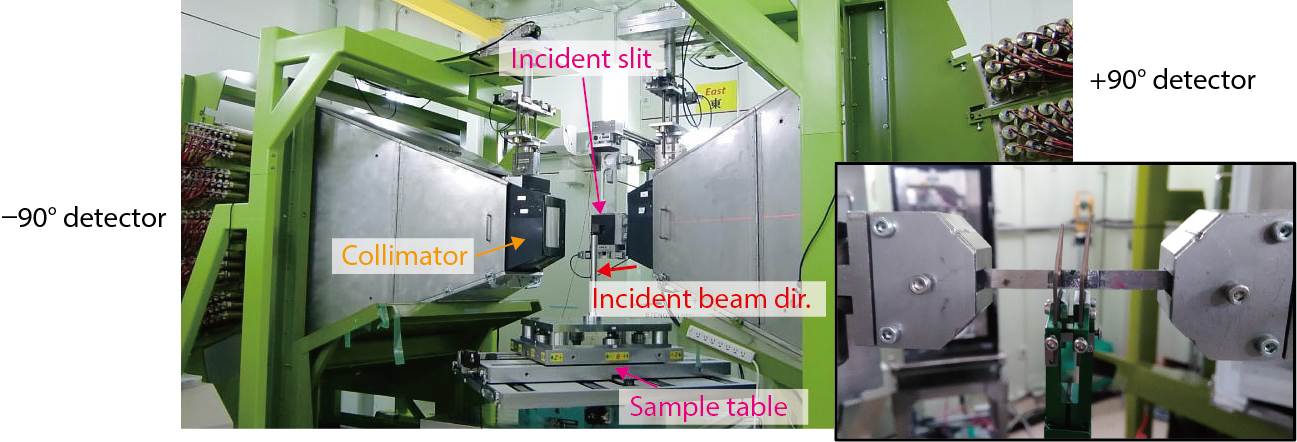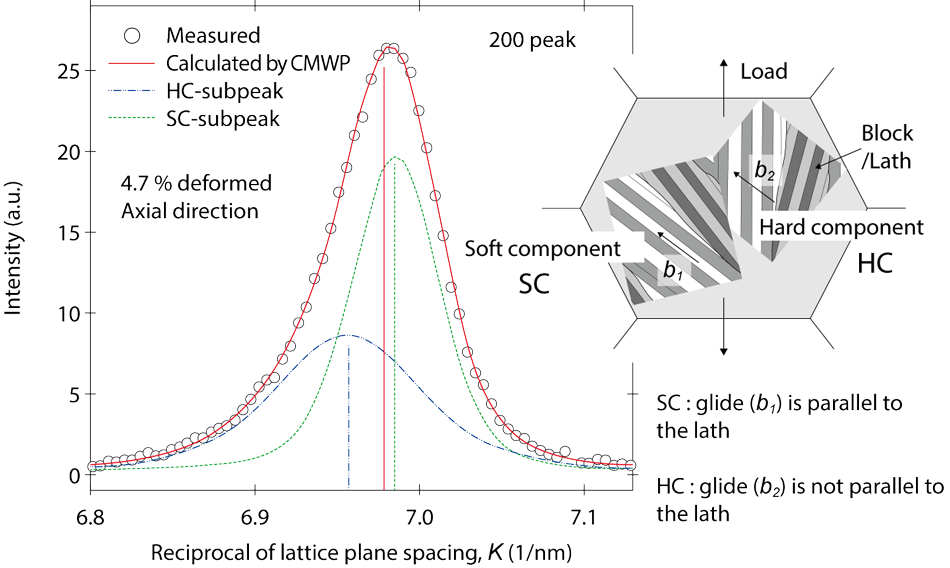
Fig.5-6 J-PARC high-resolution neutron diffractometer “TAKUMI”

Fig.5-7 Typical diffraction profiles in the axial direction under tensile plastic deformation

Fig.5-8 Change in dislocation density with respect to the strain amount of tensile deformation
When an Fe-C based alloy (steel) is quenched to room temperature from a high-temperature region wherein the austenite structure is stable, a rapid phase transformation occurs to form a martensite structure, accompanied by the high-density generation of defects called dislocations. This steel is called a martensitic steel and is well-known as a high-strength structural material. There are four forms of martensite: lath, butterfly, lens, and thin-plate-shape, which are produced depending on the content of carbon and the generation-temperature range. Among these, lath is most important for practical use as heat-treated steel. Lath is a band (lamellar) region of several tens of nanometers. Some laths form blocks, and blocks with the same orientation form packets. Lath martensitic steel shows a very large strength increase (work hardening) at the initial stage of plastic deformation. However, since the dislocation density is very high and the microstructure is fine in lath martensitic steel, the observation of microstructure variation by deformation using the electron-microscope technique is difficult, and the mechanism of large work hardening has yet to be elucidated.
We have developed a dislocation-evaluation method utilizing the high resolution of J-PARC neutron diffractometer “TAKUMI” (Fig.5-6) and applied this method to the analysis of data obtained from the neutron-diffraction experiment during tensile deformation of lath martensitic steel. The variations of dislocation density and dislocation arrangement during tensile plastic deformation were quantified to elucidate the mechanism of the large work hardening. Fig.5-7 shows the diffraction profile in the tensile direction under tensile plastic deformation. We found that the diffraction profile with good symmetry before deformation becomes asymmetric after plastic deformation. We succeeded in separating the asymmetrical peak in the dislocation-evaluation analysis using the so-called CMWP method into contributions from two subpeaks related to two different packets with different slip systems for plastic deformation. That is, we discovered the existences of soft packets (soft component: SC) and hard packets (hard component: HC) for dislocation gliding.
Through further detailed analyses, we also found that stress, dislocation density, and dislocation arrangement were distributed between the two packets. For example, in Fig.5-8, despite the already large dislocation density before deformation, that during deformation increased in HC and work hardening occurred, resulting a large increase in the stress. On the other hand, in SC, the dislocation density decreased and softening occurred. This indicates that HC plays an important role in work hardening. These results clarify the large work hardening in plastic deformation of lath martensitic steel.
Further improvements of this dislocation-evaluation-analysis method and TAKUMI will assist not only the development of advanced steel and other metallic materials but also in elucidating ancient metallurgical techniques such as the forging of Japanese swords by analyzing the crystallographic microstructures and dislocation properties.